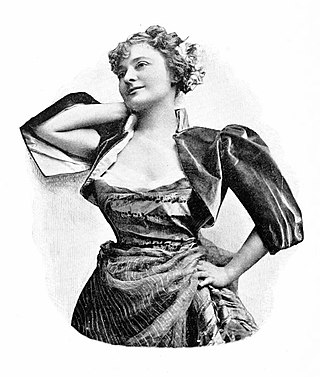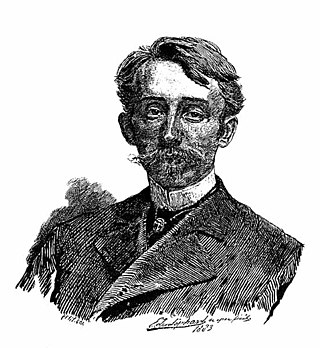Related Research Articles

Alexander III was Emperor of Russia, King of Congress Poland and Grand Duke of Finland from 13 March 1881 until his death in 1894. He was highly reactionary in domestic affairs and reversed some of the liberal reforms of his father, Alexander II. This policy is known in Russia as "counter-reforms". Under the influence of Konstantin Pobedonostsev (1827–1907), he opposed any socio-economic moves that limited his autocratic rule. During his reign, Russia fought no major wars as well; he therefore came to be known as "The Peacemaker".

Maria Feodorovna, known before her marriage as Princess Dagmar of Denmark, was Empress of Russia from 1881 to 1894 as the wife of Emperor Alexander III. She was the second daughter of Christian IX of Denmark and Louise of Hesse-Kassel. Maria's eldest son became the last Russian monarch, Emperor Nicholas II. Maria lived for 10 years after Bolshevik functionaries murdered Nicholas and his immediate family in 1918.

Alexandra Feodorovna, Princess Alix of Hesse and by Rhine at birth, was the last Empress of Russia as the consort of Emperor Nicholas II from their marriage on 26 November [O.S. 14 November] 1894 until his forced abdication on 15 March [O.S. 2 March] 1917. A favourite granddaughter of Queen Victoria of the United Kingdom, she was, like her grandmother, one of the most famous royal carriers of haemophilia and bore a haemophiliac heir, Alexei Nikolaevich, Tsarevich of Russia. Her reputation for encouraging her husband's resistance to the surrender of autocratic authority and her known faith in the Russian mystic Grigori Rasputin severely damaged her popularity and that of the Romanov monarchy in its final years. She and her immediate family were all murdered while in Bolshevik captivity in 1918, during the Russian Revolution. In 2000, the Russian Orthodox Church canonized her as Saint Alexandra the Passion Bearer.

Ilya Yefimovich Repin was a Ukrainian-born Russian painter. He became one of the most renowned artists in Russia in the 19th century. His major works include Barge Haulers on the Volga (1873), Religious Procession in Kursk Province (1880–1883), Ivan the Terrible and His Son Ivan (1885); and Reply of the Zaporozhian Cossacks (1880–1891). He is also known for the revealing portraits he made of the leading literary and artistic figures of his time, including Mikhail Glinka, Modest Mussorgsky, Pavel Tretyakov, Pantaleon Szyndler, and especially Leo Tolstoy, with whom he had a long friendship.

Jean-Marc Nattier was a French painter. He was born in Paris, the second son of Marc Nattier (1642–1705), a portrait painter, and of Marie Courtois (1655–1703), a miniaturist. He is noted for his portraits of the ladies of King Louis XV's court in classical mythological attire.

Maria Alexandrovna, born Princess Wilhelmine Marie of Hesse and by Rhine, was Empress of Russia as the first wife and political adviser of Emperor Alexander II. She was one of the founders of the Russian Red Cross Society.

Grand Duke Vladimir Alexandrovich of Russia was a son of Emperor Alexander II of Russia, a brother of Emperor Alexander III of Russia and the senior Grand Duke of the House of Romanov during the reign of his nephew, Emperor Nicholas II.

The House of Yusupov is a Russian princely family descended from the monarchs of the Nogai Horde, renowned for their immense wealth, philanthropy and art collections in the 18th and 19th centuries. Most notably, Prince Felix Yusupov was famous for his involvement in the murder of Grigori Rasputin.
The year 1895 in art involved some significant events.

Charles Auguste Guillaume Steuben, also Charles de Steuben, was a German-born French Romantic painter and lithographer active during the Napoleonic Era.

Grand Duchess Maria Nikolaievna of Russia was a daughter of Emperor Nicholas I of Russia, and sister of Alexander II. In 1839 she married Maximilian, Duke of Leuchtenberg. She was an art collector and President of the Imperial Academy of Arts in Saint Petersburg.

Prince Andrew Romanoff was a Russian American artist and author. He was a grand-nephew of Russia's last Tsar, Nicholas II. He was a great-great-grandson in the male line of Emperor Nicholas I of Russia and since the death of Prince Dimitri Romanov in 2016 was claimant to the headship of the House of Romanov until his own death 2021.

The Winter Palace is a palace in Saint Petersburg that served as the official residence of the House of Romanov, previous emperors, from 1732 to 1917. The palace and its precincts now house the Hermitage Museum. Situated between Palace Embankment and Palace Square, adjacent to the site of Peter the Great's original Winter Palace, the present and fourth Winter Palace was built and altered almost continuously between the late 1730s and 1837, when it was severely damaged by fire and immediately rebuilt. The storming of the palace in 1917, as depicted in Soviet art and in Sergei Eisenstein's 1928 film October, became a symbol of the October Revolution.

The Red Cross with Triptych egg, also known as Red Cross Triptych egg or Red Cross Egg with Resurrection Triptych, is an enameled Easter egg made under the supervision of the Russian jeweler Peter Carl Fabergé in 1915, for Nicholas II of Russia. Nicholas II presented the Fabergé egg to his wife Empress Alexandra Fyodorovna on Easter 1915.

Nicholas II, known in the Russian Orthodox Church as Saint Nicholas the Passion-Bearer, was the last Emperor of Russia, King of Congress Poland and Grand Duke of Finland, ruling from 1 November 1894 until his abdication on 15 March 1917. During his reign, Nicholas gave support to the economic and political reforms promoted by his prime ministers, Sergei Witte and Pyotr Stolypin. He advocated modernization based on foreign loans and close ties with France, but resisted giving the new parliament major roles. Ultimately, progress was undermined by Nicholas's commitment to autocratic rule, strong aristocratic opposition and defeats sustained by the Russian military in the Russo-Japanese War and World War I. By March 1917, public support for Nicholas had collapsed and he was forced to abdicate the throne, thereby ending the Romanov dynasty's 304-year rule of Russia (1613–1917).

Amalia Küssner Coudert was an American artist from Terre Haute, Indiana, who is best known for her portrait miniatures of prominent American and European figures of the late 19th and early 20th century. Subjects for her paintings include actresses Lillian Russell and Marie Tempest; wealthy socialites Caroline Schermerhorn Astor, Emily Havemeyer ; members of Britain's royal family and London society such as King Edward VII, Alice Keppel, and Consuelo Vanderbilt, the Duchess of Marlborough; as well as members of the Russian royal family, including Czar Nicholas II and his wife, Czarina Alexandra Feodorovna; and wealthy industrialists such as Cecil Rhodes.

Baron Ernst Friedrich von Liphart (1847–1932), Russified as Ernst Karlovich Lipgart and also referred to in English as Earnest Lipgart, was a painter, a noted art expert and art collector from what is now Tartu in Estonia. After living for a time in Florence, he moved to France and then to Russia, where he was a curator at the Hermitage Museum.

Alexander II was Emperor of Russia, King of Poland and Grand Duke of Finland from 2 March 1855 until his assassination in 1881.

Christina Robertson RSA was a Scottish painter generally remembered for her portraits of Russian imperial family, representative of Academical tradition. She was the first woman honorary member of the Royal Scottish Academy.

Louis Lemercier de Neuville or La Haudussière, real name Louis Lemercier, was a French puppeteer, journalist, columnist, playwright and storyteller. He created the French Théâtre de Pupazzi.
References
- 1 2 Lucienne de Saint-Mart , AskArt.com. Retrieved 2013-06-28.
- ↑ Lucienne de Saint-Mart, Toledo Blade , March 30, 1953, page 12.